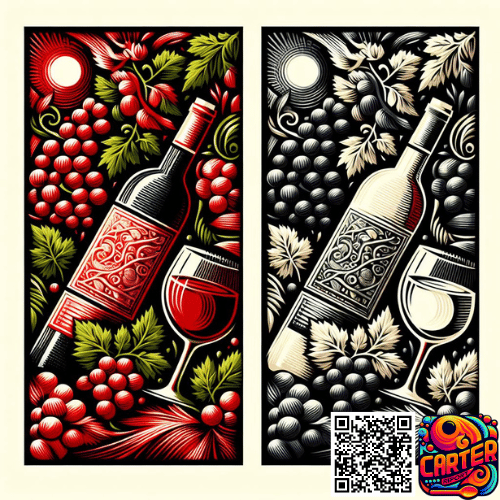In the grand amphitheater of gustatory delights, where grapes are the gladiators and the palate serves as the emperor to whom they appeal, two champions emerge—white wine and red wine.
Each, a nectar of the gods, vying for the favor of connoisseurs and casual sippers alike. But as any true aficionado knows, the battle between these vinous varieties is less about supremacy and more about the art of pairing, the science of taste, and the joy of discovery.
I recall an evening that turned into night, then early morning, spent debating the virtues of white and red wines with an old friend who fancied himself something of a sommelier. Glasses were raised, bottles were emptied, and though we disagreed on much, we concurred that wine, in all its forms, was a marvel to be celebrated.
Table of Contents
White Wine: The Crisp Contender
White wine, often served chilled in a glass designed to preserve its cool elegance, brings a spectrum of flavor profiles ranging from the zesty citrus and green apple to the lush tropical fruits. Its light, refreshing acidity makes it the perfect companion to seafood, poultry, salads, and light pasta dishes—not to mention those spicy or sweet dishes that demand a delicate balance.
Red Wine: The Bold Challenger
Red wine, on the other hand, prefers a warmer welcome, cradled in a glass that enhances its rich aromas and allows its bolder flavors to breathe. With notes of dark fruit, spice, and earthiness, red wine commands the table, pairing wonderfully with robust cheeses, hearty meats, and desserts that can stand up to its intensity.
Taste, Temperature, and Terroir
While the white shines in its lightness, red revels in its depth. But how do they stack up when we pour into the details?
A List for the Libation Lovers
- Temperature Tactics: White chilled, red room temp.
- Flavor Finesse: Whites are crisp, Reds are bold.
- Pairing Perfection: Match the wine to the dish’s weight and flavor.
The Table of Tannins and Terpenes
| Attribute | White Wine | Red Wine |
|---|---|---|
| Ideal Temperature | Chilled (45-50°F) | Room Temperature (60-68°F) |
| Flavor Profile | Citrus, Green Apple, Tropical Fruits | Dark Fruit, Spice, Earthiness |
| Pairs Well With | Seafood, Poultry, Light Pasta | Cheeses, Hearty Meats, Desserts |
| Optimal Glass Shape | Narrow Stem | Wide Bowl |
| Health Benefits | Antioxidants, Lower Risk of Heart Disease | Rich in Resveratrol, May Reduce Cholesterol |
Connoisseur’s Compass
- Seasonal Sippers: Consider white in summer’s heat, red in winter’s chill.
- Foodie Friends: Align your wine choice with your menu—a harmonious pair elevates both.
- Health Hedonists: Both wines offer benefits, but moderation is the maître d’.
And now, as we set our glasses down and reflect on the vineyards’ bounty, it’s time for…
The Q&A Cork Pop
Q1: Can I serve red wine chilled? A1: You can, but be prepared for wine purists to swoon in despair.
Q2: Is it true that white wines are just unripe red wines? A2: Ah, the myth! No, they’re made from different grapes and processes. Nice try, though.
Q3: Will drinking wine turn me into a sommelier? A3: Only if reading about surgery made one a doctor. Appreciation doesn’t replace education.
Q4: Can I cook with any wine I wouldn’t drink? A4: You could, but why sacrifice your dish’s dignity? Cook with what you’d sip.
Q5: How do I choose between white and red? A5: Ask yourself, “What’s on my plate?” and “What’s in my heart?” Then pour accordingly.
In the dance of the decanters, whether you lean towards the crisp acrobatics of white wine or the bold ballet of red, remember—the best bottle is the one shared with friends, paired with food, and poured with pleasure. Here’s to your next vinous adventure—may it be as enriching as it is enjoyable!

